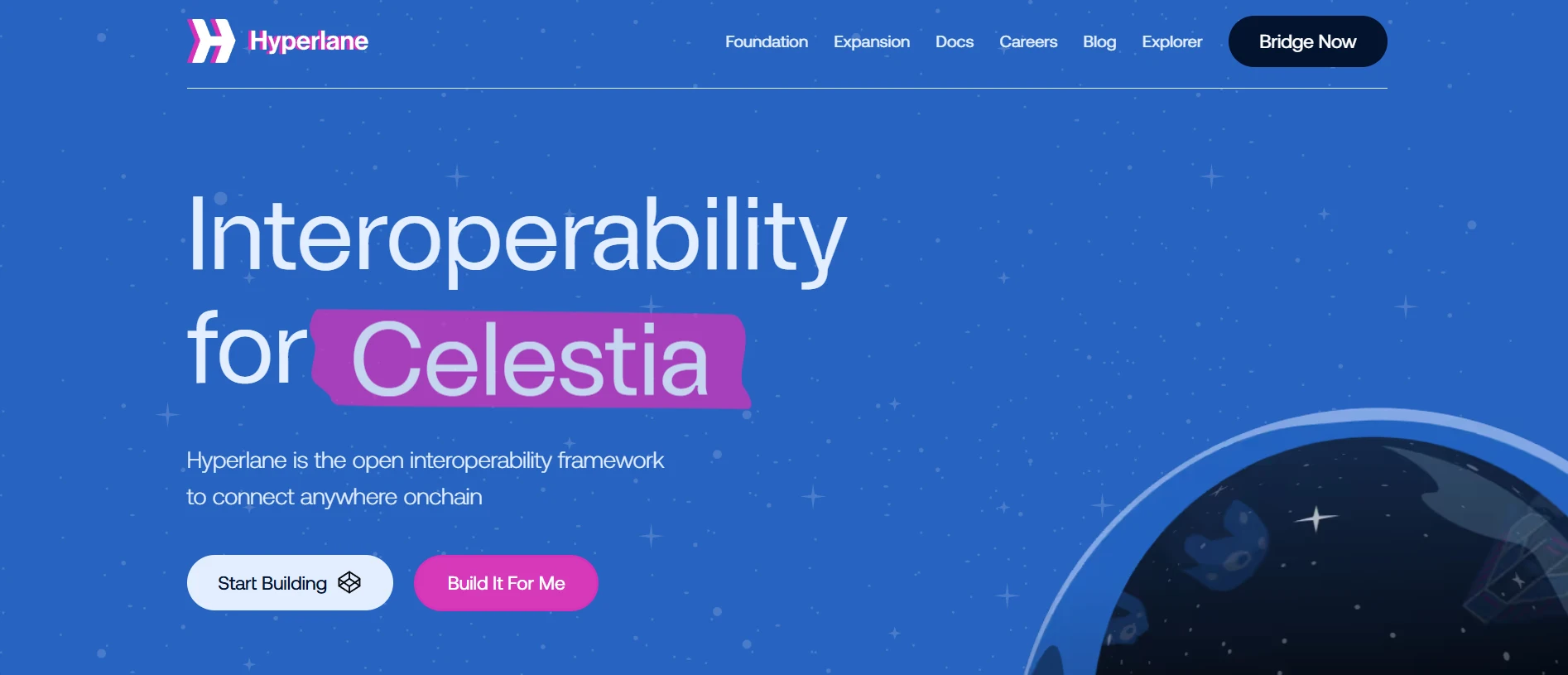Hyperlane is a modular blockchain protocol that provides reliable and flexible interchain communication. It enables developers and users to freely transfer data and assets across networks without relying on centralized intermediaries. Hyperlane supports over 150 blockchains, integrates with various virtual machines (EVM, SVM, CosmWasm), and uses a unique Interchain Security Modules (ISM) architecture to customize security. With its openness, extensibility, and high throughput, Hyperlane is becoming one of the key infrastructures in the Web3 ecosystem.
- Core Goals and Hyperlane Architecture
- Role of ISM and Modular Security
- HYPER Token Utility and Economy
- Warp Routes Usage Guide
- Comparison with Competitors and Project Outlook

Core Goals and Hyperlane Architecture
Hyperlane addresses one of the most pressing issues in Web3 — ecosystem fragmentation. Most blockchains operate in silos, and transferring assets or data between them requires complex bridges. Hyperlane offers a permissionless infrastructure for building interchain routes (Warp Routes) that can be deployed on any blockchain without project team approval.
Key architecture components include:
- Mailbox — a contract on each chain used for sending and receiving messages.
- Relayer — an independent agent delivering messages between chains.
- ISM — a plugin that verifies the authenticity of interchain messages.
- Warp Routes — bridges that enable transferring tokens, NFTs, or commands across chains.
This architecture makes Hyperlane a flexible platform for building apps that interact with multiple chains — such as cross-chain DEXs, multi-chain NFT games, or DAOs with assets across different networks.
Role of ISM and Modular Security
One of Hyperlane’s key innovations is the Interchain Security Modules (ISM) — a flexible security mechanism that allows each app or route to define its own message validation rules.
ISM capabilities include:
- Support for multisig validators
- Use of light clients (e.g., for zk-proofs)
- Combining multiple validation sources
- Custom plugin development for tailored logic
This approach allows projects to balance decentralization, speed, and cost. The table below compares ISM types and their use cases:
| ISM Type | Security | Latency | Cost | Use Case |
|---|---|---|---|---|
| Multisig | Medium | Low | Low | DApps, bridges |
| Light Client | High | Medium | Medium | DAO, DeFi, stable networks |
| Custom Plugin | Depends on code | Any | Any | Games, R&D |
| Combined (Composed) | High | High | High | Financial infrastructures |
HYPER Token Utility and Economy
Token Role in the Network
HYPER is the native token of the Hyperlane ecosystem, used for security, staking, incentives, and payments. It is an ERC‑20 token with a total supply of 1 billion. Around 17% is currently in circulation, and its utility is expected to grow as adoption increases.
Staking and Validators
Users can delegate HYPER to validators via the Symbiotic Vault — a decentralized staking platform. In return, they receive stHYPER, a liquid token usable in other DeFi apps. Stakers earn rewards based on participation and lock duration. Validators processing interchain messages receive a portion of transaction fees.
Security and Slashing
To ensure network integrity, Hyperlane implements slashing. If a validator behaves dishonestly — e.g., relaying false messages — their stake can be partially or fully slashed. This creates financial incentives for honest behavior and protects users.
Rewards and Future Use
In addition to staking, HYPER holders can help expand the network. The protocol incentivizes relayers, developers, and users who onboard new Warp Routes or generate interchain transactions. In the future, HYPER may also serve as a fee token for exchanges and interchain route creation. The tokenomics are designed to promote long-term growth, rewarding all ecosystem roles and sustaining security.
Warp Routes Usage Guide
What Are Warp Routes
Warp Routes are ready-to-use cross-chain pathways by Hyperlane that enable token transfers across networks without manual bridge setup or custom contracts. They’re suitable for both developers and users who want secure asset transfers between compatible chains.
Getting Started
Start by installing the Hyperlane CLI — a command-line tool for route management. Then define your route: source chain, destination chain, and token address. The CLI automatically deploys needed contracts like Mailbox, ISM, and others to ensure valid message delivery.
Using the UI
Once set up, users can access the Warp UI — a web interface for selecting networks, tokens, and amounts. After setting parameters, permissions are confirmed in the crypto wallet. The transaction is sent, and relayers transfer the data to the target chain.
Tracking and Confirmation
After sending, users can track the transfer status via the interface or blockchain explorers. Typically, tokens arrive within minutes, though timing varies by network load and ISM settings. Failed transactions can be retried.
Benefits of Warp Routes
Warp Routes simplify cross-chain transfers, making them secure and transparent. They operate without centralized intermediaries, and their flexibility supports any Web3 project — especially DeFi platforms, games, and multi-chain infrastructures where reliability is critical.
Comparison with Competitors and Project Outlook
Hyperlane stands out among competitors — like LayerZero, Axelar, and Wormhole — due to its fully open infrastructure. Any developer can connect a new chain without team approval, offering unmatched flexibility and scalability.
The standout feature is the modular ISM security framework. It enables customized validation logic, balancing decentralization, latency, and cost — unlike fixed-architecture protocols.
Hyperlane already supports over 150 blockchains and works with multiple VMs, including EVM and SVM. Support for CosmWasm and Move is planned. This cross-platform approach makes Hyperlane a universal solution for DeFi, NFTs, and Web3 apps.
Thanks to its architecture and scale, Hyperlane is becoming the foundation of interchain interaction in Web3 and aims to be a central piece of future internet infrastructure.




